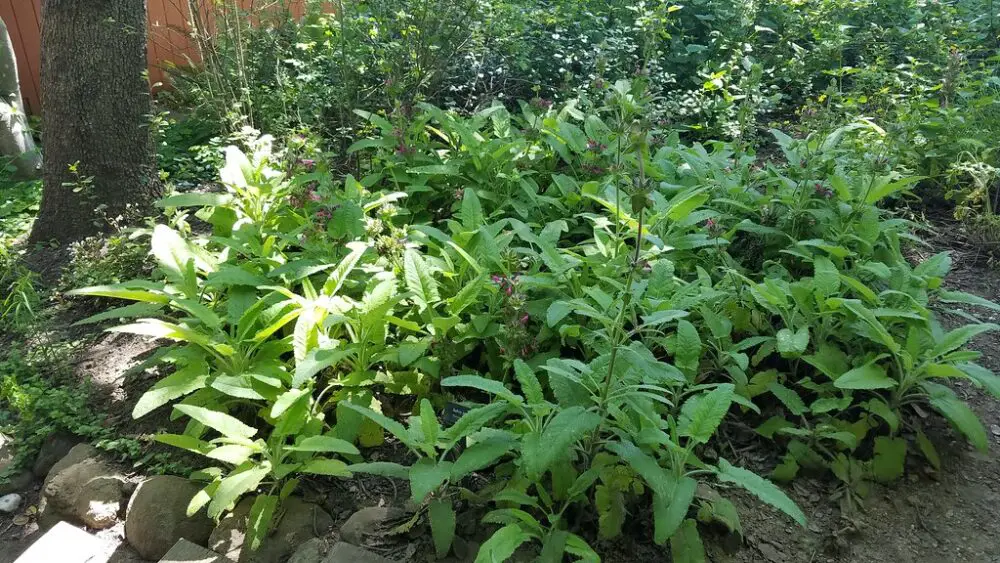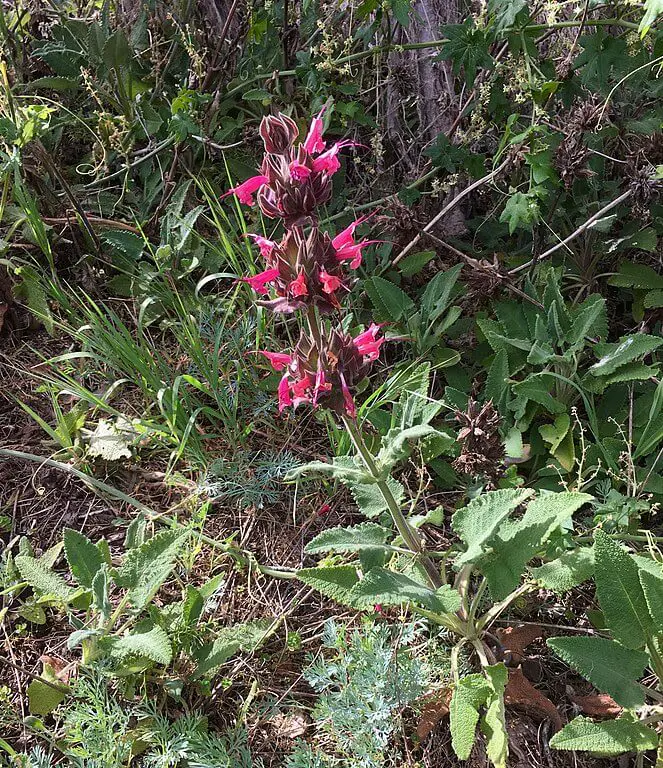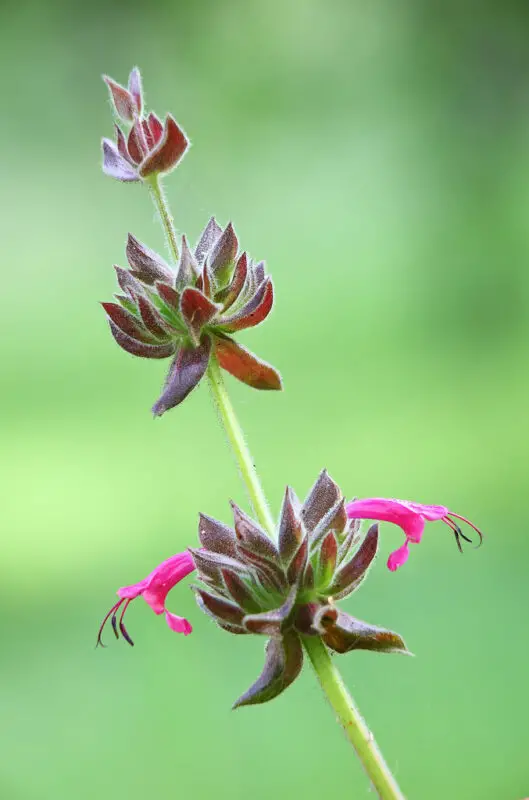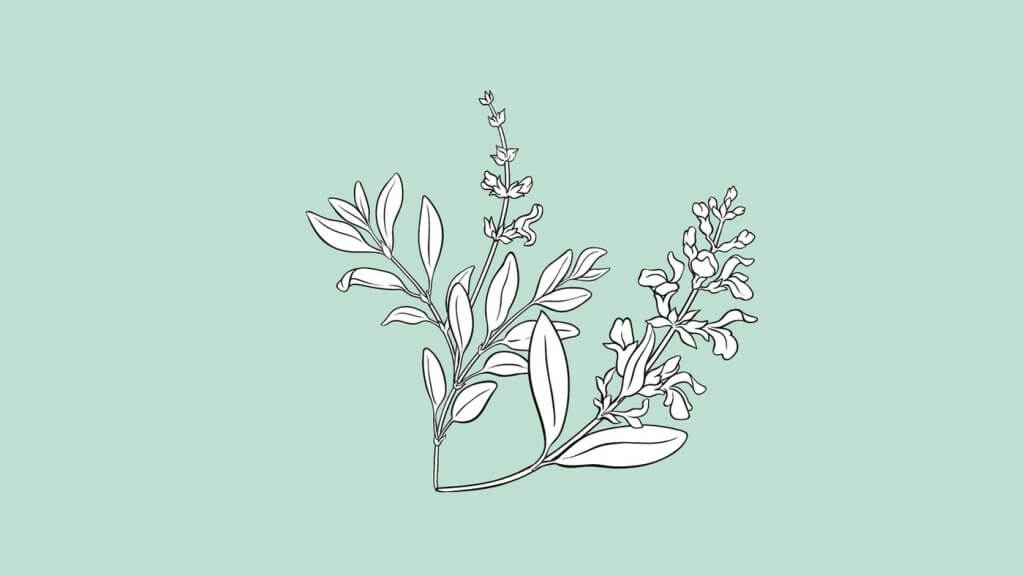Hummingbird sage is a California native plant with gorgeous red, rosy and pink flowers. California sage flowers and leaves are edible and come with a number of medicinal properties.
Discovering Hummingbird Sage
Salvia spathacea, whose common names include hummingbird sage, is a member of the Lamiaceae genus or mint family.
This low-growing perennial, also referred to as pitcher sage, produces red flowers along with rosy, pink flowers within magenta bracts and whorls. The flower color is different from other salvia species, typically in shades of blue and purple.
Its nearly evergreen foliage likes to spread and grows low, 4-12 inches off the ground, while the flower stalks rise above them standing 1-3 feet tall.
What Are You Foraging For Right Now?
We're thrilled to hear your ideas. What would you like to submit today? Feel free to share your thoughts and experiences with us.
A native plant to southern California, you can find hummingbird sage along the California coastline, as far inland as the Sacramento valley, and throughout Orange County.

Despite its prolific nature throughout sunny California, hummingbird sage prefers to grow in shaded areas or areas with partial shade away from the full sun and heat of the afternoon.
It is considered a dry shade and drought tolerant plant, only requiring watering once or twice a month. This makes the California native plant perfect for areas with extended dry seasons or drought.
This hardy member of the Salvia family blooms from March until May and has a lovely, sweet scent that’s detectable yet not overwhelming.
Hummingbird sage grows from tubular rhizomes, which will spread underground and makes it a good choice for ground cover in backyard gardens.

Why Is it Called Hummingbird Sage?
As its name implies, hummingbird sage is a great attractor of pollinators, including hummingbirds.
Hummingbird sage became a cultivar of sage during the early twentieth century by Thomas Payne. Payne was a horticulturist whose interest was in preserving California’s beauty and natural landscape.
After noticing the strong attraction of hummingbirds to the rose-colored flowers of this prolific cousin of mint, the native California plant earned its name, hummingbird sage.
Bees, butterflies, and hummingbirds are all attracted to the sweet scent of this plant type. As a bonus, it’s also deer resistant, making it a favorite of backyard gardeners and landscapers.
Make sure to also check all the uses of scarlet sage (Salvia coccinea).
Can You Eat Hummingbird Sage?
Hummingbird sage is edible.
The flowers and bright green leaves can be eaten raw or cooked and are said to have medicinal properties when consumed in tea form.
Hummingbird sage may soothe sore throats, help with congestion, and have antimicrobial properties. It can be consumed hot or cold, and is a favorite of those who enjoy recipes made from native and wild-grown plants.
Its leaves and flowers can also be added to cakes and bread for a unique flavor.
Where Does Hummingbird Sage Grow?
Hummingbird sage is most readily found along the California coast. It prefers areas with part shade and shady slopes at mild elevations where it can take advantage of moist soil. You can find it alongside chaparral and coastal sage scrub, often near live oak or oak woodland.
As a ground cover, it can be grown in shady garden areas, under trees, and with minimal water. These properties make it an ideal choice for California gardeners.

During the off-season, generally fall, the rhizomes of hummingbird sage can also be separated and replanted to propagate and fill in other garden areas.
Most prolific during the spring, hummingbird sage will grow well in backyard butterfly gardens. It can bloom as early as January or February if the conditions are right. In fact, given the right lighting and temperature, hummingbird sage may bloom on and off from spring through fall.
Its low water needs mean regardless of season, the foliage on hummingbird sage can maintain an evergreen nature.
Foraging Hummingbird Sage
Because hummingbird sage is so easy to grow, it’s perfect for backyard foraging.
As with any edible plant, make that whatever has been used for pest control and growth is organic and free of poisons. If foraging for hummingbird sage in wild or native environments, you’ll also want to be sure of your source and wash all leaves and flowers thoroughly before ingesting.
Given cleanliness and lack of chemical additives, both the leaves and flowers of hummingbird sage can be used in a variety of ways.
When choosing the right pieces of the plant to use, look for first-year growth which will be more tender. Older portions of hummingbird sage can have a woody base and are less edible than new growth.
As always, be mindful of the habitat from which you’re foraging so that the other creatures that depend on it can maintain their lifestyle.
5 Things You Can Do with Hummingbird Sage
There are a variety of options when it comes to the use of hummingbird sage. As mentioned earlier, the leaves and flowers can be eaten both raw and cooked.
Some of the more common things that are made with hummingbird sage include:
1. Tea
Infuse warm water with the leaves of hummingbird sage to make a soothing and floral tea with a pleasant scent and mild medicinal properties.
2. Short Cake
Adding a few finely chopped leaves to traditional cake recipes give them an unusual and pleasing flavor.
3. Chips
Quick fry a few leaves for crunchy hummingbird sage chips.
4. Syrup
Blending a few leaves with agave or honey can make a lovely, lightly floral, and unique syrup.
5. Bath Tonic
Adding a few leaves to a hot bath is said to be soothing for achy joints.
Lorin is a writer, photographer and nature enthusiast in Sacramento, CA. In addition to gardening, she makes a regular practice of forging for edible plants and flowers. Nature nourishes if you know where to look.

